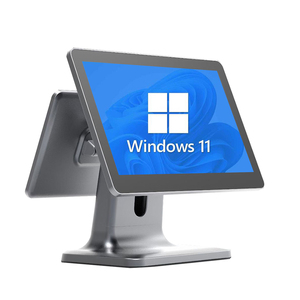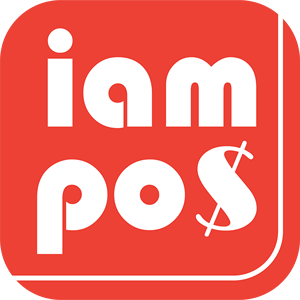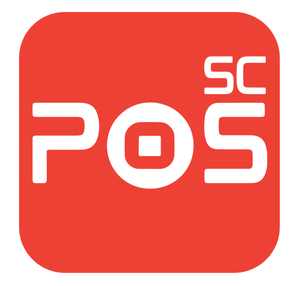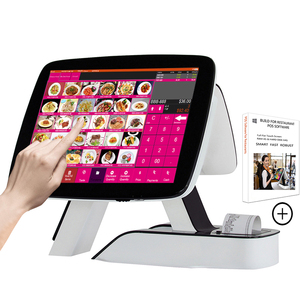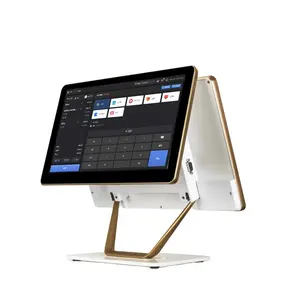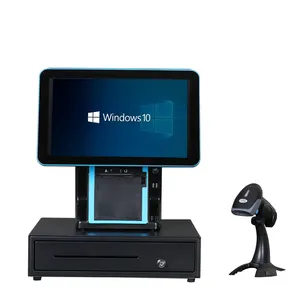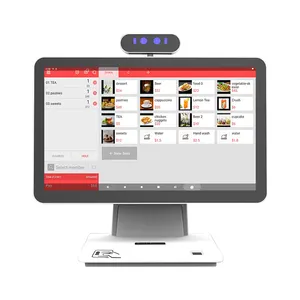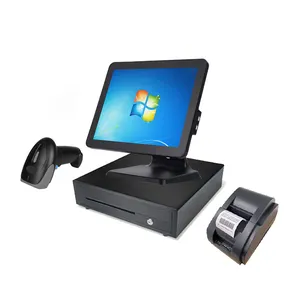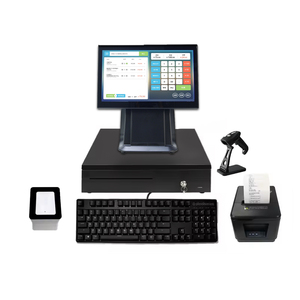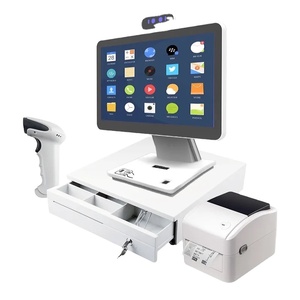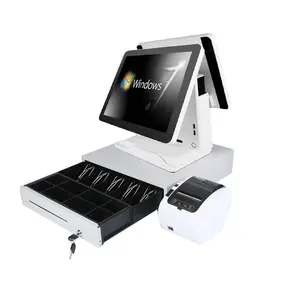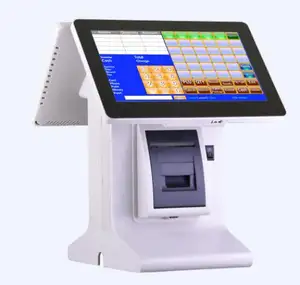Retail Information System Examples






 Top sponsor listing
Top sponsor listing




 1/18
1/18









 1/12
1/12











 1/18
1/18





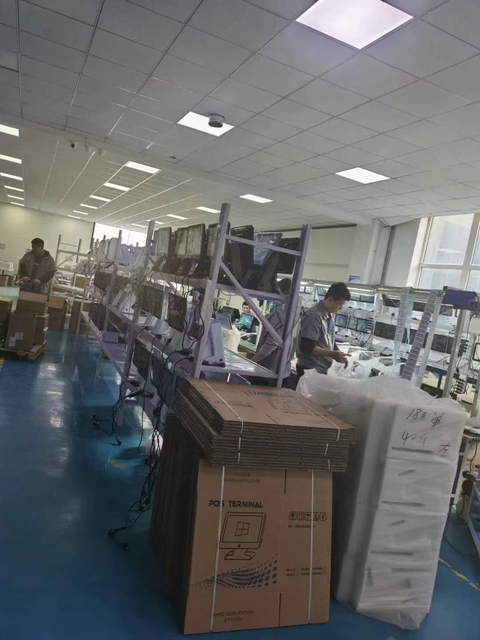



About retail information system examples
Where to Find Retail Information System Suppliers?
China remains a central hub for retail information system manufacturing, with key supplier clusters concentrated in Shenzhen, Nanjing, and Suzhou. These regions host vertically integrated electronics ecosystems that combine hardware production, software development, and assembly under one supply chain. Shenzhen leads in innovation and export volume, leveraging proximity to component suppliers and logistics networks to achieve rapid prototyping and global distribution. Nanjing and Suzhou contribute specialized engineering capabilities, particularly in all-in-one POS terminals and cloud-based software integration.
The industrial advantage lies in consolidated production infrastructure—suppliers operate facilities equipped with SMT lines, injection molding, and quality testing labs, enabling end-to-end control over product development. This integration reduces lead times for standard units to 15–25 days and supports scalable output for bulk orders. Buyers benefit from localized access to LCD panels, touchscreens, embedded systems, and payment peripherals, reducing dependency on external vendors. Customization is widely supported, including branding, OS configuration, language localization, and modular hardware design.
How to Choose Retail Information System Suppliers?
Selecting reliable partners requires rigorous evaluation across technical, operational, and transactional dimensions:
Technical & Functional Compliance
Verify compatibility with core retail operations: inventory management, sales tracking, customer relationship modules, and multi-payment integration (NFC, QR, EMV). Confirm support for both Windows and Android operating systems, as well as cloud or offline deployment modes. For international buyers, ensure software complies with local tax regulations and data privacy standards. Request demonstration access or trial licenses to assess UI/UX efficiency.
Production and Customization Capacity
Assess supplier capability through the following indicators:
- Minimum factory area of 2,000m² with dedicated R&D and QA departments
- In-house software development teams capable of API integration and firmware updates
- Customization scope covering screen size (10–19 inches), dual-display configurations, peripheral bundling (scanners, cash drawers, printers), and multilingual interface support
Cross-reference product listings with on-time delivery rates (target ≥95%) and reorder rates (>20%) as proxies for reliability and customer satisfaction.
Quality Assurance and Transaction Security
Prioritize suppliers with documented quality control processes, including burn-in testing, ESD protection, and environmental stress screening. While formal ISO 9001 certification is not universally listed, consistent performance metrics—such as 100% on-time delivery and sub-7-hour response times—indicate operational discipline. Use secure payment mechanisms and request sample validation before full-scale procurement. Evaluate thermal printer durability, touchscreen responsiveness, and system boot speed during testing.
What Are the Best Retail Information System Suppliers?
| Company Name | Location | Main Products | Online Revenue | On-Time Delivery | Avg. Response | Reorder Rate | Min. Order Quantity | Price Range (USD) |
|---|---|---|---|---|---|---|---|---|
| Nanjing Shangchao Shidai Electronics Co., Ltd. | Nanjing, CN | POS Software, Cloud Systems, Dual-Screen Terminals | $610,000+ | 99% | ≤2h | 19% | 1 pc | $15–230 |
| Suzhou Pinnacle Electronic Co., Ltd. | Suzhou, CN | All-in-One POS, Mobile POS, Payment Kiosks | $10,000+ | 100% | ≤7h | 40% | 1 set | $15–520 |
| Guangzhou Mohang Times Info Tech Limited | Guangzhou, CN | Android POS, Retail & Restaurant Systems, Thermal Printers | $10,000+ | 100% | ≤10h | 42% | 1–5 sets | $20–185 |
| Shen Gong (Shenzhen) Import & Export Co., Ltd. | Shenzhen, CN | Cash Register POS, Touch Screen Monitors, LCD Panels | $430,000+ | 100% | ≤5h | 18% | Not specified | Varies |
| Shenzhen Abeloe Technology Co., Ltd. | Shenzhen, CN | Dual-Screen Retail Systems, Windows/Android Terminals | $40,000+ | 93% | ≤4h | <15% | 1–10 pcs | $55–138 |
Performance Analysis
Nanjing Shangchao stands out for high transaction volume and fast response times, making it suitable for buyers requiring prompt communication and software-centric solutions. Suzhou Pinnacle and Guangzhou Mohang exhibit strong customer retention (40–42% reorder rates), suggesting robust product performance and after-sales support despite lower online revenue visibility. Shenzhen-based suppliers offer broad hardware variety and customization flexibility, though reorder rates vary significantly. A 100% on-time delivery rate is common among top performers, while MOQs as low as one unit enable pilot testing and small business adoption. Price competitiveness is evident across entry-level systems (<$100), but higher-end all-in-one models exceed $500.
FAQs
How to verify retail information system supplier reliability?
Evaluate on-time delivery history, reorder rate, and response time as behavioral indicators of service quality. Request evidence of software updates, technical documentation, and compatibility certifications (e.g., PCI compliance for payment processing). Conduct video audits to confirm R&D and assembly capabilities.
What is the typical lead time for retail POS systems?
Standard orders are fulfilled within 10–20 days. Custom configurations involving unique casing designs, OS modifications, or bundled peripherals may extend lead times to 30 days. Air freight adds 5–7 days for international delivery.
Can suppliers provide free software or lifetime licensing?
Yes, several suppliers offer free POS software with perpetual licenses or cloud-based platforms at no additional cost. Implementation, training, and ongoing support may incur separate fees. Clarify update frequency and server hosting terms before procurement.
Do manufacturers support OEM/ODM services?
Most suppliers listed provide OEM branding (logo, packaging, labeling) and ODM modifications (hardware specs, interface layout, language packs). Minimum order thresholds for full customization typically start at 50 units, though smaller batches are accepted for software-only adaptations.
How to assess system durability and technical support?
Request MTBF (Mean Time Between Failures) data for critical components like touchscreens and thermal printers. Confirm warranty coverage (typically 12 months) and availability of remote diagnostics, firmware upgrades, and spare parts supply. Post-purchase support responsiveness should be tested during the sampling phase.



